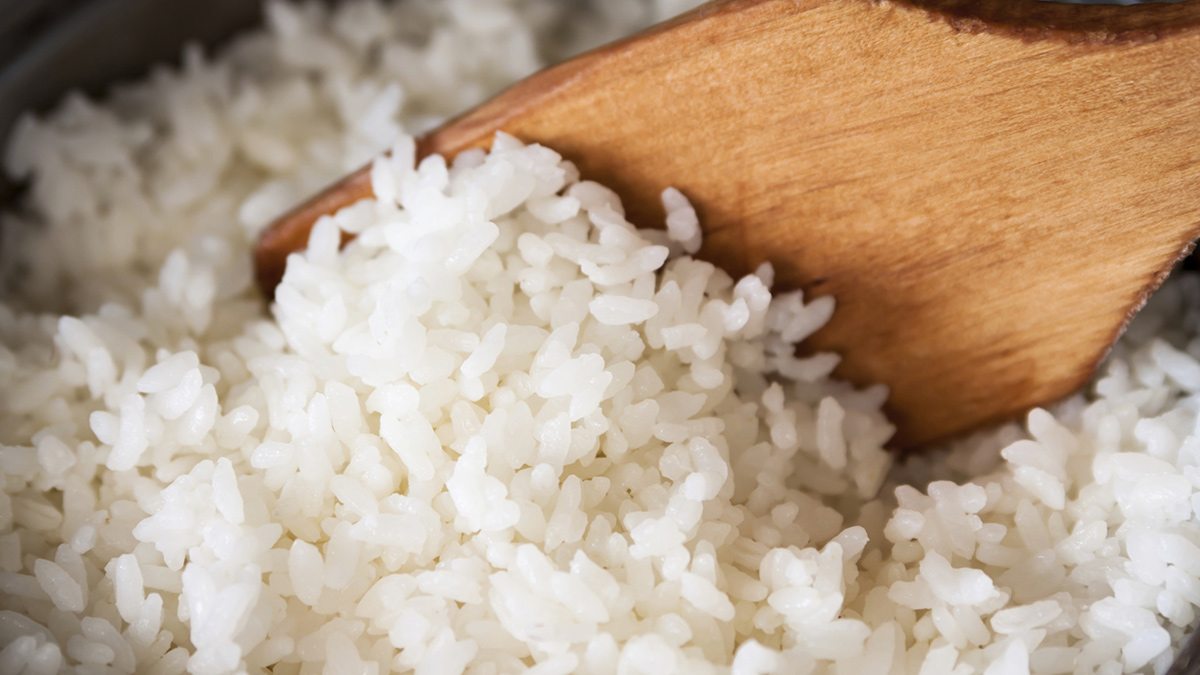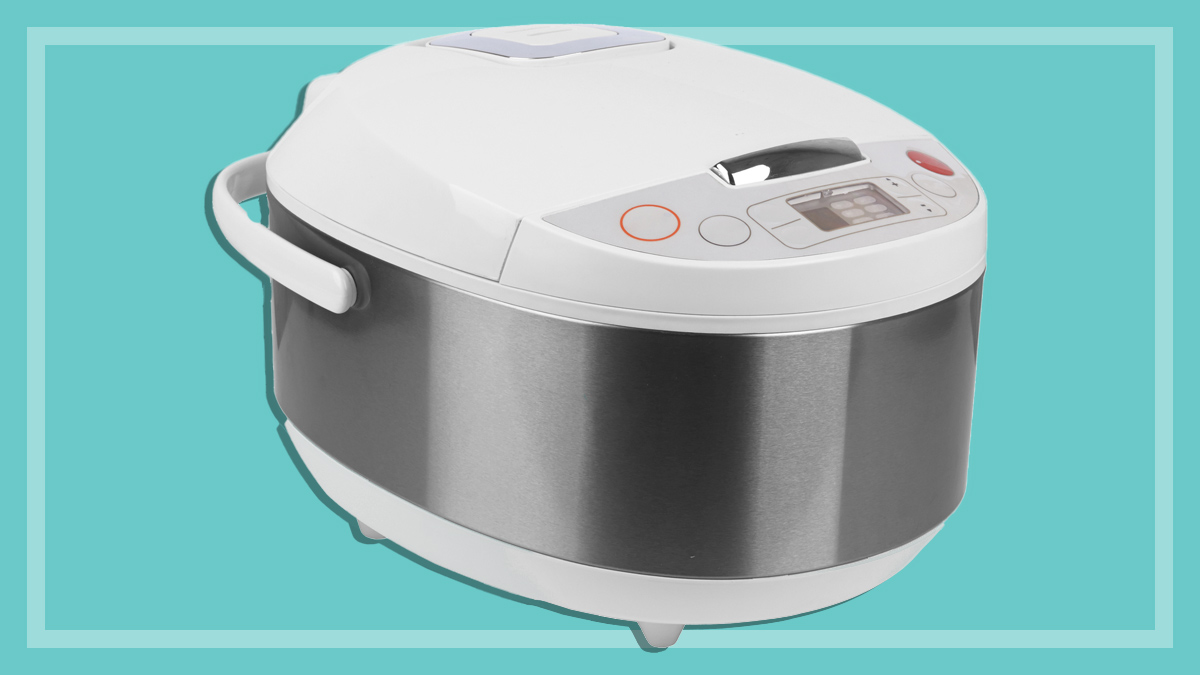Get our independent lab tests, expert reviews and honest advice.
How to buy the best rice cooker

Do you find it difficult to get your rice cooked just right? Do you end up with glug all over your cooktop? Then perhaps a rice cooker is for you.
On this page:
- How does a rice cooker work?
- How long does a rice cooker take?
- How to cook rice in a rice cooker
- How to cook brown rice in a rice cooker
- How to cook coconut rice in a rice cooker
- What to look for in a rice cooker
- How much does a rice cooker cost?
How does a rice cooker work?
Rice cookers are designed to make it easy to get perfect rice every time. You simply put a measured ratio of rice and water (or stock) into the bowl, flick the switch and it heats the rice to just on boiling. At the end of the cooking time, when the rice is cooked and all the liquid absorbed, the cooker switches to a ‘keep warm’ mode. This eliminates any timing issues by keeping the rice at serving temperature for hours, so it’s ready whenever dinner is, not the other way around.
How long does a rice cooker take?
Cooking times vary depending on the type of rice you’re using and how many cups you’re cooking. It’s important to follow the manufacturer’s instructions when it comes to rice to water ratio.
Based on our testing, cooking white (jasmine) rice can take around 30 minutes on average but can take as little as 11 minutes and up to 57 minutes in the models we’ve tested. Brown rice takes longer to cook – based on our testing it generally takes an hour to cook brown rice but cooking times range from 28 minutes up to 1.5 hours in the models we’ve tested.
How to cook rice in a rice cooker
As a rule of thumb, if you’re cooking white rice, the amount of cups of water added should be the same as the amount of cups of rice added (for example 2 cups of rice to 2 cups of water). This is a guide and can be experimented with to suit individual tastes. The manufacturer’s instructions are based on the measuring cup provided, so make sure you use the supplied cup to measure rice and liquid.
Some other useful tips when using a rice cooker:
- Place uncooked rice (white or brown) in a sieve and rinse well under running water until the water runs clear. This will remove most of the starch and prevent the rice from becoming gluggy.
- Use cold water from the tap, not cold water from the fridge as this will increase the cooking time.
How to cook brown rice in a rice cooker
Follow the manufacturer’s instructions using the supplied measuring cup and/or the brown rice grading inside the bowl. The ratio of water to brown rice is generally 1 cup of rice to 1.5 cups of water (for example 2 cups of rice to 3 cups of water). Select the brown rice program. Brown rice can take double the time of white rice depending on the quantity.
How to cook coconut rice in a rice cooker
When making coconut rice in a rice cooker, use jasmine or basmati rice to add an authentic flavour. To make coconut rice using 2 cups of uncooked rice:
- measure the rice using the supplied measuring cup
- rinse the rice well to remove the starch
- add the rice to the bowl with a 400mL can of coconut milk
- measure out 1.5 cups of water using the supplied cup and select the white rice program
- once the program is completed, fluff the rice up using a fork.
What to look for in a rice cooker
Capacity
Capacity is usually given as the maximum number of cups of uncooked rice you can cook at once. Larger models will cook up to 10 cups of rice, but smaller ones only about 5 cups. Keep in mind that these are considerably smaller than a standard cup – usually only about 160mL. Information on the minimum number of cups that can be cooked at one time is rarely provided, but usually it’s about 2 cups, although it may be more for some of the larger rice cookers.
Lid type
Unsealed
Pros: usually cheaper, fairly intuitive to use and generally easy to clean, plus you can usually check progress through the glass lid.
Cons: they can rattle and also spatter starchy water onto the benchtop, especially if they’re being used close to capacity.
Sealed
Pros: prevents the benchtop spatter and any rattle.
Cons: it’s a little more fiddly to clean. There’s usually a removable inner lid which can be cleaned in the sink, but the outer lid also needs cleaning, especially the stem vent. Some lids have a removable vent as well.
Ease of use
There are a few things that make a rice cooker easier to use:
- a non-stick bowl means easier cleaning
- large handles make it easier to lift, especially if it’s full
- a removable cord makes it easier to carry to the table and to store
- controls that are well labelled and easy to understand.
Automatic shut-off and keep warm
All the rice cookers we’ve tested have a feature to automatically shut-off cooking and keep the rice warm, though the length of time they’ll keep the rice warm may vary.
Accessories
All the rice cookers we’ve tested come with a cup for measuring out the rice and liquid. This is not a standard measuring cup size and there may be differences between cookers. Other accessories may include:
- spatula and/or ladle for serving the rice
- steamer basket or tray so you can use the rice cooker to steam other items.
Fuzzy logic
Some rice cookers have fuzzy logic incorporated into their programming. This allows them to use less strict timing to account for different cooking conditions.
Quick feature
If you’re in a rush, some models have a “quick” cook function to speed up the cooking process. Keep in mind that while this feature may save you time it might not give perfect results.
Multigrain
Some rice cookers have a multigrain option. However, manufacturers do not always mean the same thing when they say ‘multigrain’ so it’s a good idea to check the manual. It may just mean that it can cook grains other than rice, or that it can cook a graded mixture of rices.
How much does a rice cooker cost?
In our latest rice cooker reviews, rice cookers range in price between $13 and $346.






